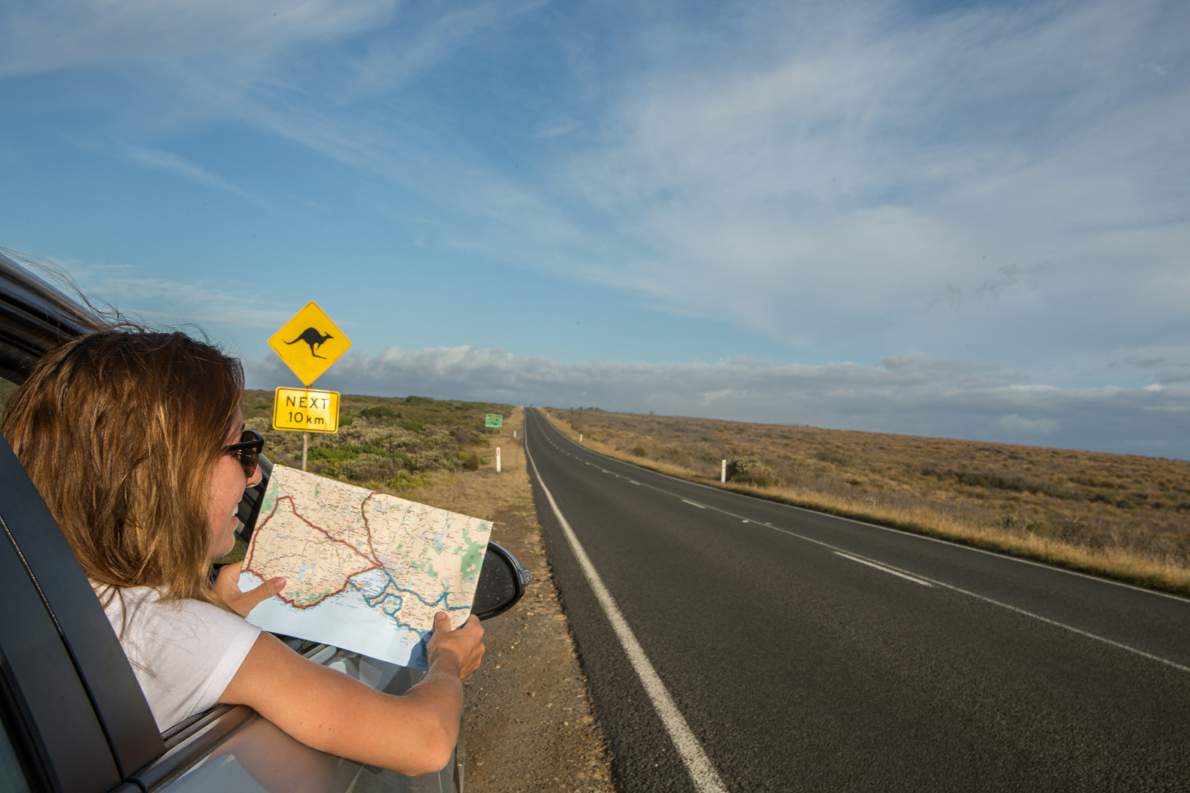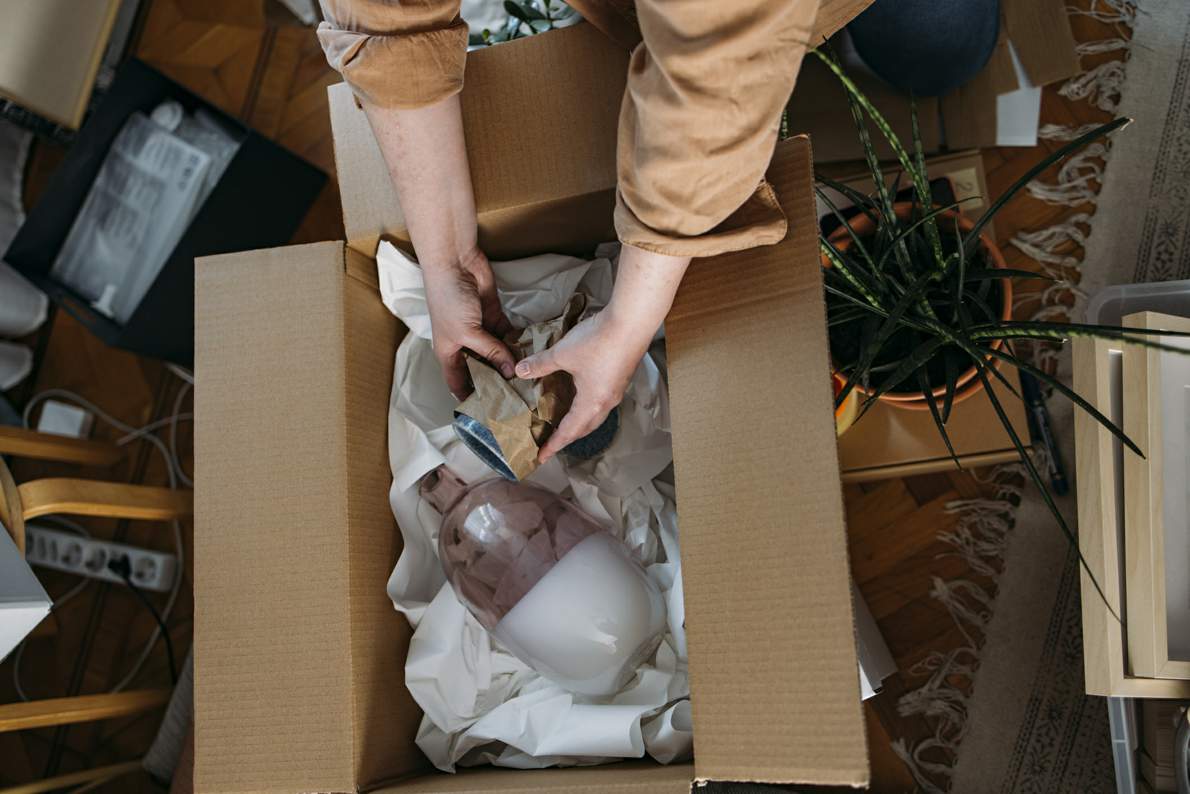Packing for a Long-Distance Move
 MOVING LONG-DISTANCE ACROSS AUSTRALIA
MOVING LONG-DISTANCE ACROSS AUSTRALIA
Embarking on a long-distance move stirs excitement and apprehension, signifying a profound life change. In this comprehensive guide, we aim to accompany you through the intricate process of packing, transforming what might seem daunting into a manageable and positive experience. Our goal is to provide valuable insights that extend beyond the logistics of moving, ensuring a smooth transition into your new home and allowing the thrill of new beginnings to shine through any challenges.
Discover practical tips and thoughtful strategies that cater to both seasoned movers and first-timers alike. Learn to simplify the packing phase, making it not just a necessity but a meaningful step toward embracing the excitement and promise of a new chapter. Pack not just belongings, but the anticipation and positivity of embracing change.
Assessing Your Needs: Making Wise Decisions When Moving
 PLANS & PREPERATIONS WHEN MOVING
PLANS & PREPERATIONS WHEN MOVING
In the initial stages of preparing for your move, it is important to take a crucial step that sets the tone for an organised and efficient transition: assessing your needs. This process goes beyond the mere act of packing; it involves a thoughtful examination of your belongings and a strategic decision-making approach that ensures you carry with you only what truly matters.
Before you start wrapping items in bubble wrap or taping up boxes, take a comprehensive inventory of your possessions. Evaluate the significance, functionality, and sentimental value of each item. This introspective journey enables you to make informed decisions about what to keep, what to sell, what to donate to charitable causes, and what to discard.
This discerning process declutters your living space and makes your move more streamlined and cost-effective. By carefully curating your belongings, you not only reduce the physical volume of items to be transported but also minimise the mental load associated with unnecessary possessions. This strategic approach to assessing your needs ensures that when you arrive at your new destination, you have the things that truly matter, creating a fresh and purposeful start in your new home.
Creating a Plan: Strategising Your Move
For a successful long-distance move, having a well-thought-out plan is crucial. It goes beyond just packing – including timelines and checklists. Timelines help spread tasks over weeks or months, avoiding last-minute rushes. Checklists serve as handy guides through the entire moving process.
With a solid plan, you gain control over the changes, reducing stress. It not only prevents oversights but also allows flexibility for unexpected situations. This way, what might seem like a complex move becomes a well-organised journey to your new home.
Gathering Supplies: Equipping Yourself for Your Moving Adventure
Moving efficiently requires the right tools. Ensure you have everything you need to protect your belongings during transit:
Sturdy Boxes
Selecting durable and appropriately sized containers is essential for safeguarding your belongings during transit. These boxes serve as protective cocoons, cradling your possessions securely and minimising the risk of damage.
Reliable Tape
Reliable tape ensures the structural integrity of your packed boxes. It binds the layers of cardboard, creating a secure shield that withstands the jostles and bumps of transportation. Invest in high-quality tape to fortify your boxes and provide an added layer of protection.
Bubble Wrap
Fragile items demand special attention, and bubble wrap is the material for the job. This protective material absorbs shocks and vibrations, preventing delicate belongings from succumbing to the hazards of the moving adventure. Wrap fragile items generously to preserve their pristine condition.
Labels
Labels play a pivotal role in maintaining order amidst the chaos of moving. Clearly label each box with its contents and destination room. This organisational strategy not only facilitates a smoother unpacking process but also allows you to locate specific items with ease, minimising post-move disarray.
Markers
Markers, in tandem with labels, provide an extra layer of precision in your organisation efforts. Use them to denote fragile items, indicate box priorities, or highlight special handling instructions. Markers contribute to a well-coordinated and systematic packing and unpacking process.
Packing Paper
Packing paper serves as an additional layer of protection for delicate surfaces. Use it to wrap items with sensitive finishes, ensuring that no scratches or abrasions occur during the move. This simple yet effective measure preserves the aesthetic appeal of your belongings.
Scissors and Box Cutters
Scissors and box cutters are indispensable tools for the precision required in unpacking. Keep these tools easily accessible to efficiently open boxes without causing damage to their contents. They enhance the overall efficiency of the unpacking phase.
Packing Strategies: Mastering the Art of Packing
 The Art of Packing for Your Move
The Art of Packing for Your Move
Prepare for the packing phase of your long-distance move with a strategy. The following tips are for packing clothing, electronics, furniture, and fragile items. Each strategy is tailored to safeguard your possessions, turning the moving process into a simplified and efficient process.
1. Clothing: The Art of Efficient Folding and Layering
Clothing, with its varied fabrics and styles, demands a strategic approach. Maximise space and minimise wrinkles by employing efficient folding techniques. Utilise wardrobe boxes for hanging garments, ensuring they reach your new home in pristine condition. Layering clothes within boxes provides added cushioning against potential shifting during transportation.
2. Electronics: Safeguarding Your Technological Investments
Electronics are often delicate and very sensitive to movement. Start by backing up important data before packing. Use the original packaging whenever possible, as it is designed to provide optimal protection. Wrap items such as laptops, monitors, and other electronic devices in bubble wrap and secure cables to prevent tangling. Clearly label boxes containing electronics for careful handling.
3. Furniture: Disassembly and Protection
Furniture, bulky and diverse in structure, benefits from a systematic approach. Disassemble furniture when possible to reduce size and facilitate easier transportation. Protect surfaces with blankets or furniture pads to prevent scratches and dings. Keep all hardware and assembly instructions in clearly labelled bags for efficient reassembly at your new home.
4. Fragile Items: Layered Protection for Delicate Possessions
Fragile items, such as glassware, dishes, and artwork, necessitate meticulous care. Start by layering the bottom of boxes with packing paper for added cushioning. Wrap each item individually in bubble wrap or packing paper, securing it with tape. Place heavier items at the bottom and lighter, more delicate items on top. Fill any remaining gaps in the box with packing material to prevent movement.
5. Books and Documents: Stacking for Stability
Books and important documents require careful consideration due to their weight and significance. Pack books vertically to prevent spine damage, alternating bindings for stability. Utilise smaller boxes to manage weight, reinforcing the bottom with tape. For important documents, use plastic sleeves or waterproof containers to safeguard against potential moisture.
6. Kitchen Items: Nesting and Layering for Safety
Kitchen items, including pots, pans, and utensils, benefit from a combination of nesting and layering. Stack pots and pans with packing paper in between to prevent scratches. Wrap fragile items individually and layer them with ample cushioning. Use dish boxes for fragile items like glassware, ensuring they are snugly packed to minimise the risk of breakage.
7. Labelling: Clarity for Efficient Unpacking
Regardless of the item, clear labelling is a universal packing strategy. Mark boxes with their contents and destination room to streamline the unpacking process. Use colour-coded labels or a numbering system for an added layer of organisation. Designate a "priority" label for boxes containing essentials that should be unpacked first.
Labelling and Organising: Simplifying Unpacking Day
Transitioning from packing to unpacking requires a strategic approach. In this section, explore the essential art of labelling and organising, where categorisation, detailed labels, and inventory lists become the keys to an efficient unpacking experience. These precision techniques not only streamline the process but also end the frustration of searching for misplaced items, ensuring a smooth move into your organised and harmonious new home.
Categorisation for Logical Unpacking:
Begin your packing journey by grouping items logically. Categorise belongings based on the room they belong to or their functional similarities. This initial step sets the foundation for an organised unpacking experience.
Detailed Labels for Instant Recognition:
Affix clear and detailed labels to each box, offering a snapshot of its contents and its intended destination within your new home. Ensure that these labels are easily visible, providing instant recognition amid the myriad of moving boxes.
Colour-Coded System or Numerical Sequence:
Enhance the clarity of your labelling strategy by incorporating a colour-coded system or numerical sequence. This additional layer of organisation allows for quick identification, expediting the unpacking process and minimising the chances of confusion.
Inventory Lists for Quick Reference:
Take your organisation a step further by creating inventory lists detailing the contents of each box. This serves as a quick reference guide, sparing you from the need to open multiple boxes in search of a specific item. An inventory list streamlines the unpacking process and brings an extra layer of efficiency.
Minimise Opening Boxes with Strategic Labelling:
By adopting meticulous labelling and organising techniques, you minimise the need to open every box to locate a specific item. This strategic approach not only saves time but also reduces the chances of belongings getting misplaced or mixed up during the unpacking process.
Embrace Simplicity in Unpacking:
Effective labelling and organising go beyond mere logistics; they usher in a sense of order and simplicity during the unpacking phase. Bid farewell to the frustration of searching for misplaced items and embrace the joy of creating a new home with a clear and organised unpacking day.
Incorporating these labelling and organising strategies transforms the unpacking process from a potential source of stress into a methodical and efficient experience. As you navigate through the labelled boxes, each with its designated place and purpose, you'll find yourself seamlessly settling into your new home, free from the disarray of misplaced belongings.
Loading and Transporting: Safely Moving Your Life
Moving into your new abode involves more than just closing the door behind you; it demands a strategic approach to loading and transporting your life's possessions. Whether you opt for the expertise of professional movers or embark on the do-it-yourself (DIY) route, this phase is critical to ensuring the safe arrival of your cherished belongings.
1. Professional Movers or DIY Evaluation:
Before the loading process, decide whether to enlist the expertise of professional movers or take the do-it-yourself (DIY) route. Assess the scale of your move, budget considerations, and personal preferences to make an informed decision.
2. Strategic Packing for Safe Transport:
Pack strategically to safeguard your possessions during transit. Use appropriate packing materials such as bubble wrap, packing paper, and sturdy boxes. Distribute weight evenly within boxes, ensuring they are securely sealed to prevent shifting during transportation.
3. Furniture Disassembly and Protection:
If applicable, disassemble furniture to facilitate easier transportation and maximise space in the moving vehicle. Utilise furniture pads or blankets to protect surfaces from scratches and dings. Keep all hardware and assembly instructions in a clearly labelled bag for efficient reassembly.
4. Loading Heavy Items First:
When loading the moving vehicle, prioritise heavy items at the bottom. This foundational approach helps maintain stability during transit, minimising the risk of damage to delicate or breakable items.
5. Secure Fragile Items with Extra Care:
Fragile items demand special attention. Wrap them individually in bubble wrap or packing paper and place them in designated boxes marked "fragile." Consider placing these boxes on top of heavier items to prevent crushing.
5. Utilise Straps and Tie-Downs:
Securely fasten furniture and heavy items within the moving vehicle using straps and tie-downs. This prevents shifting during transportation and ensures that your belongings arrive in the same condition as they were loaded.
7. Consider Climate-Sensitive Items:
Be mindful of climate-sensitive items such as electronics, musical instruments, and artwork. Ensure they are adequately protected against temperature changes and potential moisture. Consider transporting these items in your vehicle if necessary.
8. Label Boxes for Unloading Efficiency:
Label each box with its contents and the designated room in your new home. This labelling strategy not only facilitates a smooth unloading process but also assists professional movers or friends in helping with the move by placing boxes in the correct rooms.
9. Maintain an Essentials Box:
Pack a separate essentials box containing items you'll need immediately upon arrival. This may include toiletries, a change of clothes, important documents, and basic kitchen essentials. Keep this box easily accessible for a stress-free first day in your new home.
Unpacking and Settling In: The Final Stretch
 Settling In Your New Home
Settling In Your New Home
As you arrive at your new home, unpacking and settling in become the focus. Beyond the mere act of opening boxes, prioritise unpacking essentials for a stress-free first day.
Simultaneously, ensure a seamless transition by promptly setting up utilities and taking time to explore your new neighbourhood, turning the process of settling in into an exciting exploration of your new surroundings.
Discover the Chess Moving Advantage
Chess Moving is an Australian-owned and operated removalist company with offices located in major cities and regional centres, providing relocation services to individuals, families, and businesses. We offer comprehensive services tailored to the specific needs of each client, ensuring a seamless and stress-free transition to your new destination.
Whether you're moving locally or across Australia, Chess Moving is your reliable moving partner throughout the entire moving process. We understand the nuances of the Australian landscape and people, making us the best choice for your relocation needs. You may reach us at 13 14 69 or visit our website today to learn more about our services.